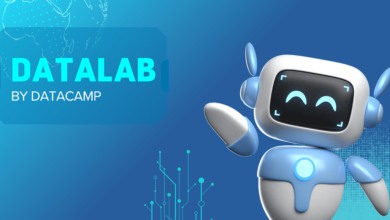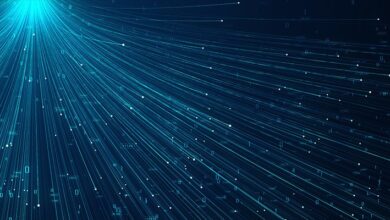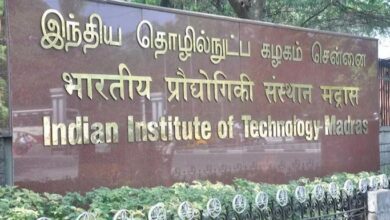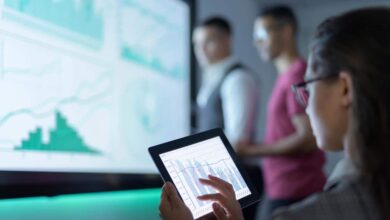Top Books on Data Science With Python: Unlock Data Magic!
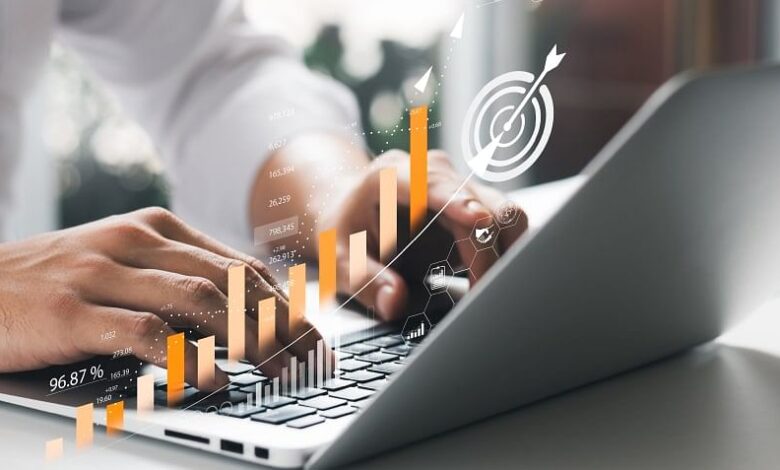
Every minute, computers worldwide grab millions of gigabytes of data. But the question is, what effort will you put into fetching sense out of this vast data? How does a data scientist utilize this data for the applications that bring power to the modern world?
Data science is a continuously evolving field that implements scientific methods and algorithms to manage complicated data sets. Data scientists use languages such as R and Python to analyze and harness the available data. To become successful data scientists, professionals must have key knowledge of programming and languages, especially Python and statistics.
Books are a great way to enhance the knowledge spectrum, and there are many accessible books on data science with Python. Likewise, you should invest in the greatest book to understand data science using Python.
In this article, you will learn about the overview and key takeaways of the top books on data science with Python in 2024.
Top Books on Data Science With Python in 2024
To learn data science with Python, select from the top data science with Python books discussed below:
Popular Books
Automate the Boring Stuff with Python (Practical Programming for Total Beginners) – Al Sweigart
Automate the boring stuff with Python is a detailed guide to automating tasks by implementing Python. Al Sweigart, the author, has written this best book for data science with Python in an easy-to-understand and follow language, even for programming beginners.
Key Takeaways:
- This book includes multiple topics, such as file manipulation, Web scraping and functioning Excel files.
- It offers step-by-step guidance for performing each task, along with code, snippets, and examples for the readers to understand the concepts easily.
- Moreover, this book includes major topics, such as debugging and error handling.
Python Data Science Handbook: Tools and Techniques for Developers – Jake Vander Plas
It is the best book to learn Python for data science and to function with data in Python. Jake Vander Plas is an experienced data scientist who wrote this book in an easily understandable language.
Key Takeaways:
- This book includes topics such as matplotlib, NumPy, pandas, and seaborn.
- This book explains each concept with a step-by-step guide, along with gold snippets and examples, for a clear understanding.
- It includes major topics such as data, visualization, machine learning, and data manipulation.
- Python programming language is used to elaborate the concepts.
Python Crash Course: A Hands-On, Project-Based Introduction to Programming – Eric Matthes
It is a fast-paced, detailed introduction to Python that will help you to write programs, solve problems, and a lot more. The first half of the book will teach you about basic programming concepts and the process of making your programs interactive. However, the second half will put your knowledge into practice with three major projects, including data visualization with Python’s super handy libraries, a space, invaders, an inspired arcade game, and a simple web application that you can deploy online.
Key Takeaways:
- You will learn how to use powerful Python tools and libraries.
- This book will teach you to work with data to generate interactive visualizations, customize and create web pages, and deploy them online safely.
- Learn to manage errors and mistakes to solve your programming problems.
Python for Data Analysis – Data Wrangling with Pandas, NumPy, and IPython – Wes McKinney
This book provides complete instructions for processing, manipulating, crunching, and cleaning data sets in Python. Hence, it is a practical, modern introduction to data science tools in Python. It is an ideal option for beginner data analysis and Python programmers new to scientific computing and data science.
Key Takeaways:
- Through this book, the readers can learn advanced and basic features in NumPy, beginning with data, analysis, tool, transform, cleaning, merging and reshaping the dataCreate visualizations with matplotlib and more.
- Learn to solve real-world data analysis problems with detailed and total examples.
Think Python – How To Think Like a Computer Scientist – Allen B. Downe
This book stands as the best Python for data science. Allen B. Downey saw several students struggling with this topic, so he wrote this book.
Key Takeaways:
- This book offers basic knowledge of programming, arithmetic operators, and running Python.
- Readers can learn several operations such as composition, math, functions, stack diagrams, and flow of execution.
- It includes debugging runtime and syntactic and semantic errors.
- Moreover, this book offers an analysis of search algorithms and basic Python operations.
Learning Python – Mark Lutz and David Ascher
The first part of this book provides all the necessary information to the programmers, including content on classes, operators, types, functions, exceptions, statements, and modules. For aspiring programmers or data scientists, the learning of Python book includes additional information, such as consideration choices and talks of program start, updated summaries of syntax, highlighting object-oriented programming, an updated discussion of documentation sources and more.
Key Takeaways:
- This book includes a detailed understanding of the technological strengths of Python.
- Every chapter includes a collection of activities, testing your Parton knowledge and measuring your comprehension.
- It puts a major focus on the detailed core language.
- By reading this book, you can learn to use Python for component integration, database development, systems, programming, and GUIs.
- It also includes programming for images, artificial intelligence, XML and games using Python.
Introduction to Machine Learning with Python: A Guide for Data Scientists – Andreas C. Müller and Sarah Guido
Its authors wrote this book to use machine learning and Python without any undergraduate degree or Ph.D. wishing to apply machine learning.
Key Takeaways:
- This book clearly explains the process to chain models and encapsulate your process through pipelines.
- Explain the importance of the way in which machine-learned data is presented and the parts of data that must be taken into consideration.
- It includes references to highly sophisticated subjects and offers a high-level summary.
- For researchers, data scientists, and scientists working on commercial applications, this book provides helpful techniques.
- It also discusses the most popular machine learning algorithms used at present and examines their advantages and disadvantages.
Data Science from Scratch: First Principles with Python – Joel Grus
For learners who hold an aptitude for programming and mathematics abilities, this book is the best option to guide them through statistics and arithmetic at the heart of data signs, along with the hacking skills needed to begin your career as a data scientist.
Key Takeaways:
- It explains the machine learning basics.
- This book teaches readers the Python crash course.
- It explains the process of investigating recommendation systems, Network analysis, databases, NLP and MapReduce.
- Moreover, it holds information on data collection, cleaning, exploration, manipulation, and munging.
Parallel Computing for Data Science: With Examples in R, C++ and CUDA – Norman Matloff
It is the first Python computing book written exclusively on algorithms, parallel data structures, applications, software tools, and data science.
Key Takeaways:
- The main focus of this book is on computation. It shows the process of computing on three kinds of platforms: graphics processing units, multicore systems, and clusters.
- It also discusses software packages that have more than one kind of hardware and can be used in multiple programming languages.
Data Science For Dummies – Lillian Pierson
Data science for dummies is the best starting point for IT students and professionals who quickly want to cover the multiple areas of expensive data science space. By focusing on business cases, the book includes several topics about data science, big data, and data engineering, as well as how these three major areas are combined to produce tremendous value.
Key Takeaways:
- It provides a background in data engineering and big data before moving ahead to data science and its application for generating value.
- This book includes coverage of big data, frameworks and applications, such as MPP platforms, Spark, and No SQL.
- It includes machine learning explanations along with its algorithms, as well as the evolution of the Internet of Things and artificial intelligence.
- Readers also get to acknowledge data visualization techniques, which are used to summarize, showcase, and communicate the generated data insights.
Become a Data Scientist through hands-on learning with demo projects, live training, and 24/7 support! Start learning now!
Practical Data Science with R – Nina Barrameda Zumel, John Mount
This book explains basic principles without theoretical mumbo-jumbo and uses real cases to collect, analyze, and curate the data essential for the success of your business. With the application of statistical analysis, techniques, and R programming language, it carefully elaborates examples in regard to business intelligence, marketing, and decision support.
Key Takeaways:
- This book helps developers and business analysts to increasingly collect, analyze, accurately, and report on essential business data.
- The R programming language and its tools offer a straightforward process to handle day-to-day data science tasks without an in-depth academy. Torre on advanced mathematics.
- Moreover, this book also represents the process of applying useful statistical techniques and R programming language to everyday business situations.
Data Analytics with Hadoop: An Introduction for Data Scientists – Jenny Kim, Benjamin Bengfort
If you are willing to use machine learning and statistical techniques across a huge data set, this guide shows the reason why the Hadoop ecosystem is the best option for the job.
Key Takeaways:
- Through this book, data analysts and data scientists can learn to perform multiple techniques, ranging from writing Spark applications and MapReduce with Python to using data management and advanced modeling with Hive, Spark MLlib, and HBase.
- Readers can also learn about data systems and analytical processes available to empower and build data products that can handle huge sets of data.
- This book also provides core concepts behind cluster computing and Hadoop.
Introduction to Machine Learning with Python: A Guide for Data Scientists – Sarah Guido, Andreas C. Muller
If you’re a Python user, this book will provide you with practical ways to create your machine-learning solutions.
Key Takeaways:
- It offers crucial steps required for creating machine learning applications with Python.
- The authors have focused mainly on the practical aspects of utilizing machine learning algorithms.
- Moreover, this book is familiar to NumPy and matplotlib.
Marketing Data Science: Modeling Techniques in Predictive Analytics with R and Python – Thomas W. Miller
In this book, the author explains the essential principles, concepts, and theory of real-world applications.
Key Takeaways:
- In this book, topics such as segmentation, brand and product positioning, target marketing, choice modeling, new product development, customer retention and much more are covered.
- The author also integrates important insights and information on modeling techniques in predictive analysis.
Python Data Analysis – Ivan Idris
This practical guide will provide you with a clear understanding of data analysis pipelines via machine learning techniques and algorithms implementation.
Key Takeaways:
- Readers get to explore data science and its multiple-process models.
- Learn to perform data manipulation through Pandas and NumPy to clean, aggregate, and handle missing data.
- Understand feature engineering and data processing through scikit-learn and pandas.
Top Books for Analysis
Python for Data Analysis – Wes McKinney
This book offers complete instructions for processing, manipulating, crunching, and cleaning data sets in Python.
Key Takeaways:
- It comes with practical case studies showing you the process to solve a broad set of data analysis problems.
- You also get to learn the most updated versions of IPython, pandas, NumPy and Jupyter.
- It introduces data science tools in Python.
Python for Data Science For Dummies – John Mueller, Luca Massaron
This write-up provides the easiest and fastest way to learn Python programming and statistics.
Key Takeaways:
- This book is written for people who are freshers in data analysis.
- It discusses Python data analysis programming and statistics basics.
- Moreover, it focuses on Google Colab, making it possible to write Python code in the cloud.
Python Data Analysis: Perform Data Collection, Data Processing, Wrangling, Visualization, and Model Building Using Python – Ivan Idris, Armando Fandango, Avinash Navlani
This guide offers detailed information on data analysis pipelines using machine learning techniques and algorithms.
Key Takeaways:
- Learn about data science and its process models.
- Study how to perform data manipulation through NumPy and Pandas to clean, aggregate, and manage missing values.
- It is an amazing book for business analytics, data analysts, data scientists, and statisticians who are willing to learn to use Python for data analysis.
Hands-On Data Science for Marketing: Improve Your Marketing Strategies with Machine Learning Using Python and R – Yoon Hyup Hwang
This book explains how you can drive successful marketing campaigns through data science and implement machine learning to improve customer engagement, product recommendations, and retention.
Key Takeaways:
- Learn to extract insights from data to increase profitability and optimize marketing strategies.
- Study how to implement data science techniques to acknowledge the drivers behind the failures and successes of marketing campaigns.
- Understand and predict customer behavior and create effective, personalized and targeted marketing strategies.
Hands-On Data Analysis with Pandas: A Python Data Science Handbook for Data Collection, Wrangling, Analysis, and Visualization – Stefanie Molin
Get professional with Pandas by working with mastered data, discovery, and real data sets, as well as data preparation, data manipulation, and managing data for analytical tasks through this book.
Key Takeaways:
- Learn to perform data analysis and manipulation tasks by using pandas.
- Practice Pandas application in multiple real-world domains with the assistance of step-by-step examples.
- Get hands-on data analysis with pandas for beginners and those boosting their skills in data science.
Python Data Analytics: Data Analysis and Science Using Pandas, Matplotlib and the Python Programming Language – Fabio Nelli
This book helps you tackle data acquisition and analysis with the power of the Python programming language. Moreover, this book includes coverage of an open source, pandas, easy-to-use data analysis, tools, and data structures for Python programming, language, and BSD-licensed library, providing high-performance.
Key Takeaways:
- Learn how flexible and intuitive it is to recognize and communicate meaningful data patterns using data export, reporting systems, and Python scripts.
- This book includes information about processing, opening, managing, storing and analyzing data through the Python programming language.
- Python data analytics stands as an invaluable reference with multiple examples of assessing and storing data in a database.
Hands-On Data Analysis with Pandas: Efficiently Perform Data Collection, Wrangling, Analysis, and Visualization Using Python – Stefanie Molin
This book is a great choice for data analysis, data science beginners, and Python developers who are willing to explore every step of scientific computing and data analysis through a wide range of data sets. Moreover, data scientists who want to apply Pandas in their machine-learning workflow can also get valuable information through this book.
Key Takeaways:
- Learn how to use Python data science libraries to analyze data sets in the real world.
- Understand how to solve analysis and common data or presentation problems through Pandas.
- Build Python packages, scripts and modules for reusable analysis code.
